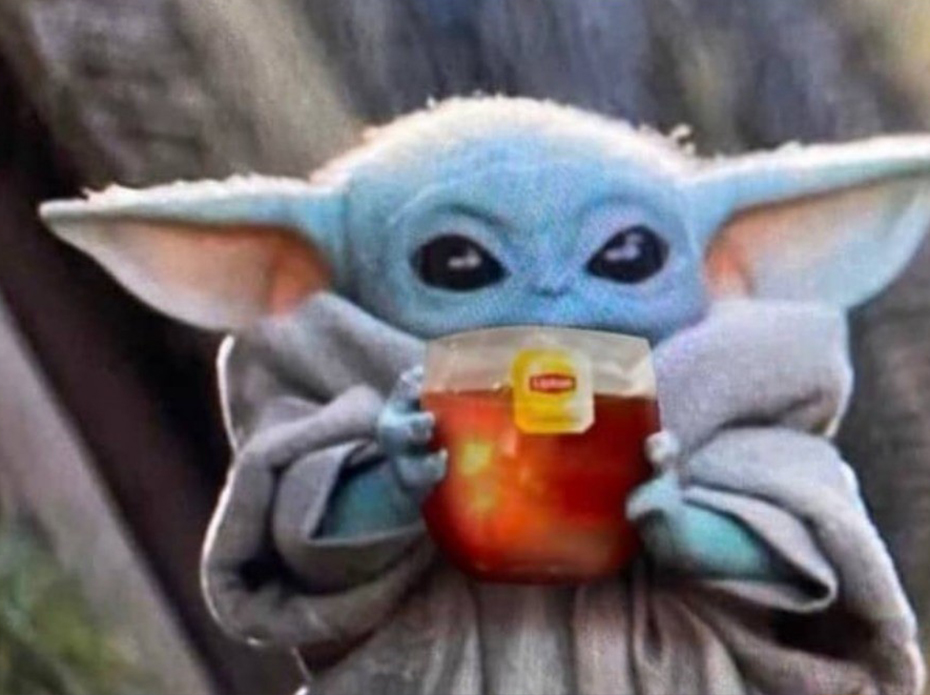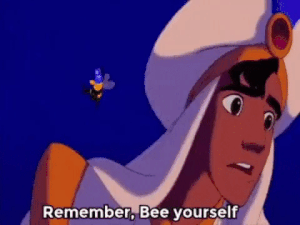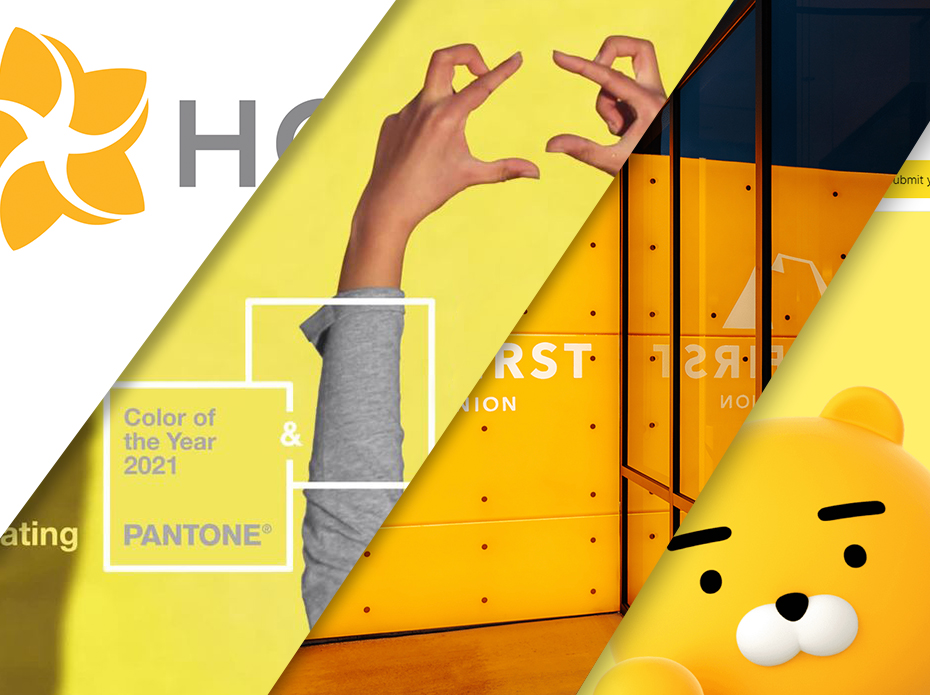
By Alicia Disantis, Brand Manager at Aux
In the wise words of the Genie in Disney’s Aladdin: “Just beeee yourself.”
 And that, my friends, was my key takeaway from Brandweek 2020, a five-day event filled to the brim with interviews, workshops and seminars from some of the best marketers in the world. The pandemic has brought us many challenges, yes, but also many opportunities – one of which being the ability to attend this event. If it were a live conference as in the previous years, there is no way I would have been able to attend due to lodging and travel costs. However, because it was forced to be virtual, myself (and I am guessing many others) were able to attend for the first time.
And that, my friends, was my key takeaway from Brandweek 2020, a five-day event filled to the brim with interviews, workshops and seminars from some of the best marketers in the world. The pandemic has brought us many challenges, yes, but also many opportunities – one of which being the ability to attend this event. If it were a live conference as in the previous years, there is no way I would have been able to attend due to lodging and travel costs. However, because it was forced to be virtual, myself (and I am guessing many others) were able to attend for the first time.
I’ve been in the marketing industry for over a decade now and am hard to impress. I’ve crabbily sat through my share of sales pitches disguised as seminars, rambling and incoherent interviews, marketing PowerPoints that would make a grown man cry. Brandweek was impressive, and even better, delightfully informative. An event that is truly informative is darn hard to come by these days.
 In this article, I’d like to share with you what I learned at Brandweek 2020 and provide actions you can take to improve your organization’s branding and marketing.
In this article, I’d like to share with you what I learned at Brandweek 2020 and provide actions you can take to improve your organization’s branding and marketing.
1. Authenticity is everything
I’ve said it before, and I will say it again: consumers can see right through your bologna. 🥪
 A decade ago, maybe they couldn’t, but in the past three years they’ve become privy to brands that seem inauthentic – plastic, if you will. And you better believe in the past six months, all consumers are now hyper-aware of your brand’s authenticity. This point was preached over and over again at Brandweek. It’s a simple change, but deeply challenging at the same time. To do this, it takes considerable thought and mindfulness about your brand, your company, your products, and your values. The exercise of stripping away the inauthenticity can be unpleasant, especially if your organization has a culture of glossiness and aloofness. Equally so is if you never really sat down and thought about who the heck your company is and what the heck you believe in.
A decade ago, maybe they couldn’t, but in the past three years they’ve become privy to brands that seem inauthentic – plastic, if you will. And you better believe in the past six months, all consumers are now hyper-aware of your brand’s authenticity. This point was preached over and over again at Brandweek. It’s a simple change, but deeply challenging at the same time. To do this, it takes considerable thought and mindfulness about your brand, your company, your products, and your values. The exercise of stripping away the inauthenticity can be unpleasant, especially if your organization has a culture of glossiness and aloofness. Equally so is if you never really sat down and thought about who the heck your company is and what the heck you believe in.
Consumers are demanding that the organizations they do business with are transparent about their values – especially when it comes to larger purchases and bigger investments in time and assets. Are they ethical? What causes do they donate to? What is their CEO like? Where do they stand on various issues? Do they allow dogs in the office? Does their board consist of only old white men? Never underestimate how much consumers care about who you are as a brand and want to learn about the people behind it.
 This shift is one of the reasons I harp so much about choice in stock photography. If you are looking for a quick way to destroy your authenticity, invest in stock photos that do not look like your consumers and their experiences with your brand, and do not look like your actual employees. Consumers know what bad stock photography looks like. They know your call center operators are not Ukrainian models.
This shift is one of the reasons I harp so much about choice in stock photography. If you are looking for a quick way to destroy your authenticity, invest in stock photos that do not look like your consumers and their experiences with your brand, and do not look like your actual employees. Consumers know what bad stock photography looks like. They know your call center operators are not Ukrainian models.
 The best scenario here is to procure actual stock photos of your team and your customers. You’d be surprised at how willing your clients would be to participate as part of the face of your brand. Just look at Instagram and TikTok (dare I mention that name). Not able to do that? The second best option would be to find stock photos of people who are as close to a real representation of your team and clients as possible.
The best scenario here is to procure actual stock photos of your team and your customers. You’d be surprised at how willing your clients would be to participate as part of the face of your brand. Just look at Instagram and TikTok (dare I mention that name). Not able to do that? The second best option would be to find stock photos of people who are as close to a real representation of your team and clients as possible.
Make fun videos of your team. Share what you love. Believe in something and talk about it. Donate to causes you believe in. Be a real human. Don’t use jargon. Show emotions. Take a stand.
2. Be Inclusive
Remember when I said, “Just beeee yourself?” Well, that only applies if you are not a racist and a bigot and a terrible human being. If you are those things, don’t be yourself, change yourself. Which leads me to my next takeaway: be inclusive. This is more than slapping a BLM logo on your website for a while or changing your avatar to a rainbow during Pride Month.
It’s about supporting people through real actions that will have an impact on their lives. It’s about empathy and understanding their values and needs. Ask yourself: what are my clients going through right now? How can I help?
If you don’t know…ask them. I think this is one of the most grossly underrated actions you can take. Just ask. Have a conversation. I’ll be the first to admit that I am a white female raised in a white, blue collar household. I don’t understand what people of other races, cultures and religions are experiencing. But I do ask. And you can too.
A pet peeve of mine, working in the financial services industry, is loan advertising that depicts people buying giant new homes or giant new SUVs and holding up the keys. Yes, these are stock photos, but how does this make those who are ecstatic to buy their first home, a fixer-upper next to a freeway? I have NEVER seen a mortgage ad that didn’t include, at minimum, an upper-middle-income home (please comment if you have).


 This is inclusiveness too; being aware and mindful of all of your customers’ situations and experiences. Step outside your bubble and take a close look at your advertising. It’s hard, I know. Get other opinions. Ask questions. As one presenter from Brandweek said, “Fall in love with your customers’ problems.”
This is inclusiveness too; being aware and mindful of all of your customers’ situations and experiences. Step outside your bubble and take a close look at your advertising. It’s hard, I know. Get other opinions. Ask questions. As one presenter from Brandweek said, “Fall in love with your customers’ problems.”
3. You Don’t Have to be Perfect but You Do Have to be Brave
I love how the pandemic has altered our expectations of brands’ glossiness. It is one of my favorite outcomes of 2020. A summer edition cover of InStyle magazine featured Drew Barrymore, who did her own makeup (gasp!), selected her own outfit (gasp!), and took her own photo (gasp!). Sure, designers cleaned her up in Photoshop afterwards, but the transition brands have made to a spunky and a DIY-attitude is shockingly refreshing.
 Many brands right now are scared to do something public facing that makes them look like amateurs. In truth, now is the time to do it. Make that first iPhone president’s message video from your living room a la Doug Burke. Put yourself out there in a way that makes you feel uncomfortable. Host a big meeting via Zoom and laugh about it when it freezes up for 60 seconds mid speech and makes you look like you’re screaming. Have technical difficulties and stammer over yourself. Have your kids bust into the room – a la one interviewer from Brandweek whose children just had to have him try their mochi ice cream in the middle of the session.
Many brands right now are scared to do something public facing that makes them look like amateurs. In truth, now is the time to do it. Make that first iPhone president’s message video from your living room a la Doug Burke. Put yourself out there in a way that makes you feel uncomfortable. Host a big meeting via Zoom and laugh about it when it freezes up for 60 seconds mid speech and makes you look like you’re screaming. Have technical difficulties and stammer over yourself. Have your kids bust into the room – a la one interviewer from Brandweek whose children just had to have him try their mochi ice cream in the middle of the session.
Don’t ask, “Am I doing this right?” because no one knows what “right” is anymore. Consumers do not care if your advertising isn’t polished right now. They do not care. They want to see you as an authentic human being who is struggling just like they are. Give your brand some breathing room for trial and error. At Brandweek, I learned that constraint is a catalyst for creativity. Don’t fear that something you create right now is flawed.
4. You Are More Than Just the Marketing Department
 Numerous presenters at Brandweek 2020 discussed the changing role of marketing within organizations. We are like octopi – no one really understands us and thinks we are weird, but we are one of the smartest and most incredible creatures on the planet (no that wasn’t in Brandweek, I just made it up but kinda like it).
Numerous presenters at Brandweek 2020 discussed the changing role of marketing within organizations. We are like octopi – no one really understands us and thinks we are weird, but we are one of the smartest and most incredible creatures on the planet (no that wasn’t in Brandweek, I just made it up but kinda like it).
Marketing now needs to integrate with many departments across the organization to be successful. A tremendous takeaway for me was when one presenter urged marketers to speak the same language as in the Board Room – to “close the gap between decision makers and marketers.” Like it or not, we need to show value to the bean counters. Additionally, we need to shift how we are seen within the organization, less as marketers and more as “strategic solution providers.” This can be done by, you guessed it, changing our communication style and language to departments outside of marketing to adapt to what is important to them. Challenging, you bet. Impossible? No.
Another key takeaway that I have been thinking about a lot lately is the idea that marketers are responsible for both the external and internal brand of the organization, and that the internal brand is equally, if not more important than the external brand. An organization’s biggest asset is its people, right? These people need to understand, believe in and respect your organization’s brand more than the external world.
I hope you found my takeaways of value were able to glean a few action items from this article. I for one am always learning, but am not afraid to be human and stand up for what I believe in. May the rest of 2020 be a time of progress, confidence, and creativity within your brand.
*****




